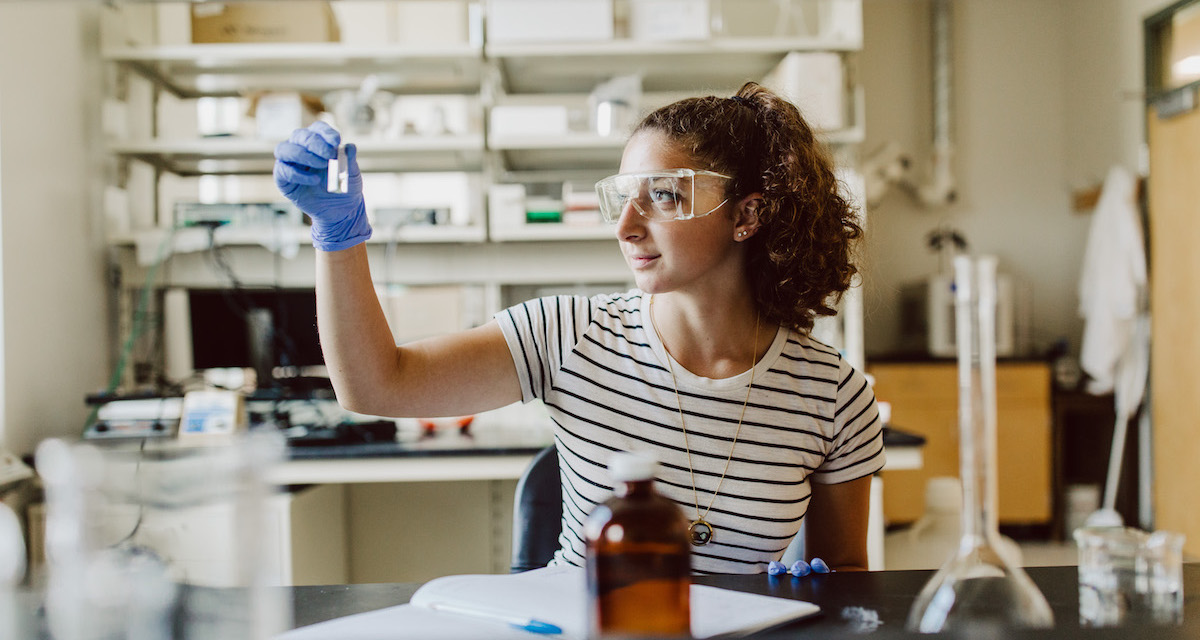The Liberal Arts: Tools for Life
Like any science building, the Ken Olsen Science Center (KOSC) is filled with machines, beakers, computers and chemicals, ready to calculate, conduct and catalyze. Lining the first floor hallway is a series of paintings. At a glance, perhaps, it’s an odd place for art. But taking a moment to analyze the abstract swirls, lines and patterns, a viewer discovers a perfect picture of the liberal arts.
In an elegant ode to the interdisciplinary nature of this rich and long-lived educational tradition, each panel serves as a visual representation of Gordon’s major discipline within the Division of Science: computer science, chemistry, kinesiology, biology, physics and mathematics.
This week the Gordon community celebrates the interconnectedness of the liberal arts through the Center for Faith and Inquiry’s annual Symposium. On this day, the College community takes a respite from daily routine in order to engage in conversation about a major contemporary or perennial issue, with the goal of learning from one another. Students, faculty and staff will come together to creatively discuss “Christianity in the Majority World.”
Learning will take place in myriad forms—panel discussions, exhibits, debates, poetry readings, presentations and performances—inside and out. Each event will provide a unique lens through which to consider issues ranging from globalization and missions to lethal persecution and the role of the Church.
“You have to be able to answer questions from many different perspectives,” says Associate Professor of Mathematics Karl-Dieter Crisman. In his classes, he equips students with the mental tools to take things apart and put them back together—but it’s only one piece of the picture, he says. “I want my students to recognize that math can solve a lot of the real-life problems, but they also need tools from other domains.”
One of Crisman’s students, Julianne McKay ’19, says that learning how to approach problems in various ways has been a hallmark of her undergraduate experience. The mathematics and history double major says she needs to exercise both sides of her brain, which she does through the Jerusalem and Athens Forum—a great books honors program that considers second-century Church father Tertullian’s persisting question, “What has Athens to do with Jerusalem?” In other words, “What has the Academy to do with the Church?” The only math major in her cohort, she enjoyed bringing to the table her field of expertise.
“If you’re a math major and you learn nothing else about [other fields], the way you approach a problem is going to be really one-sided,” says McKay. “You are either going to get frustrated with yourself because you can’t understand it, or you’re going to get frustrated with other people because you feel like they don’t understand it because they’re not seeing it from the one way you’re seeing it.”
KOSC was recently home to another manifestation of the liberal arts when McKay and Crisman helped host the North Shore Undergraduate Math Conference next door to the History Department’s first annual History and Vocation Symposium, “Museums and the Future: Challenges and Careers.”
“It’s just as important to have a math conference here as it is to have a history and museum conference,” says Crisman. “It says to everyone that what you study is valued. People begin to feel that there is mutual value and respect.”
Beyond the laboratories of KOSC and the studios of Barrington, Crisman says a liberal arts education sets students apart. “Employers like Gordon grads because . . . they look at the world in a different way, and that’s something valuable.”
 The Bell
The Bell